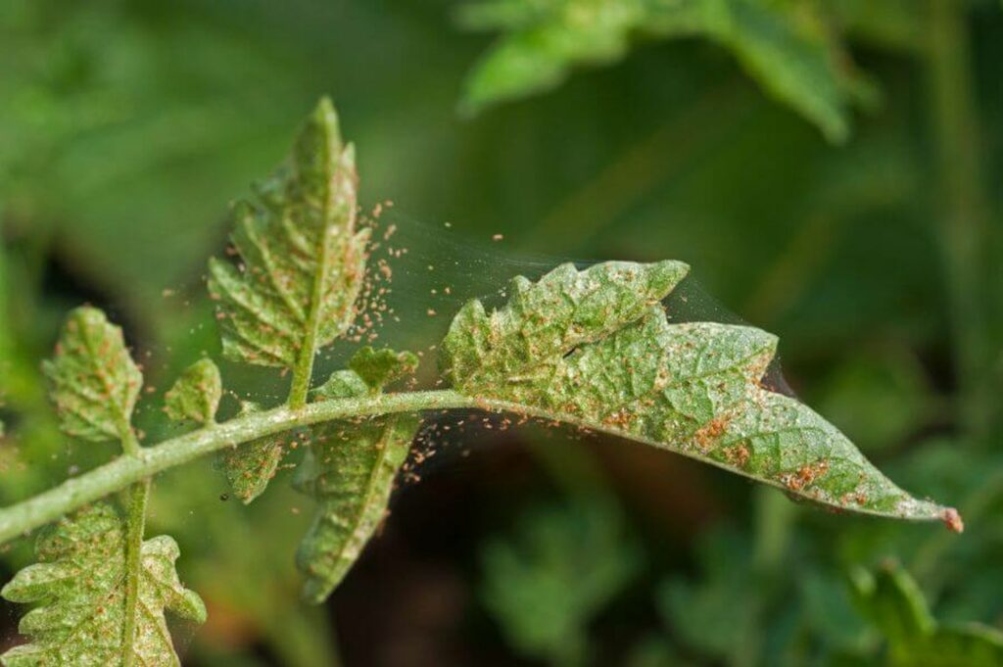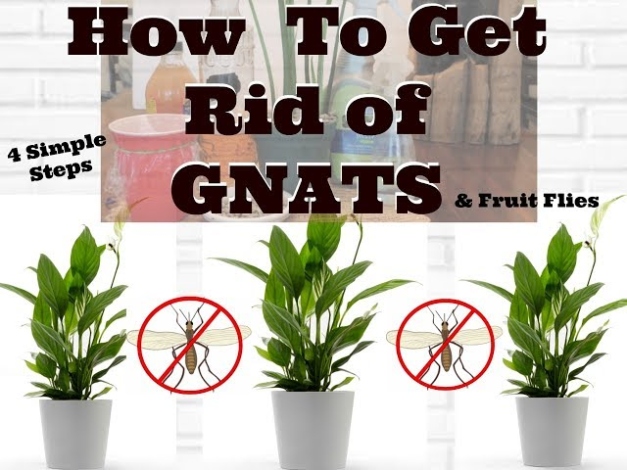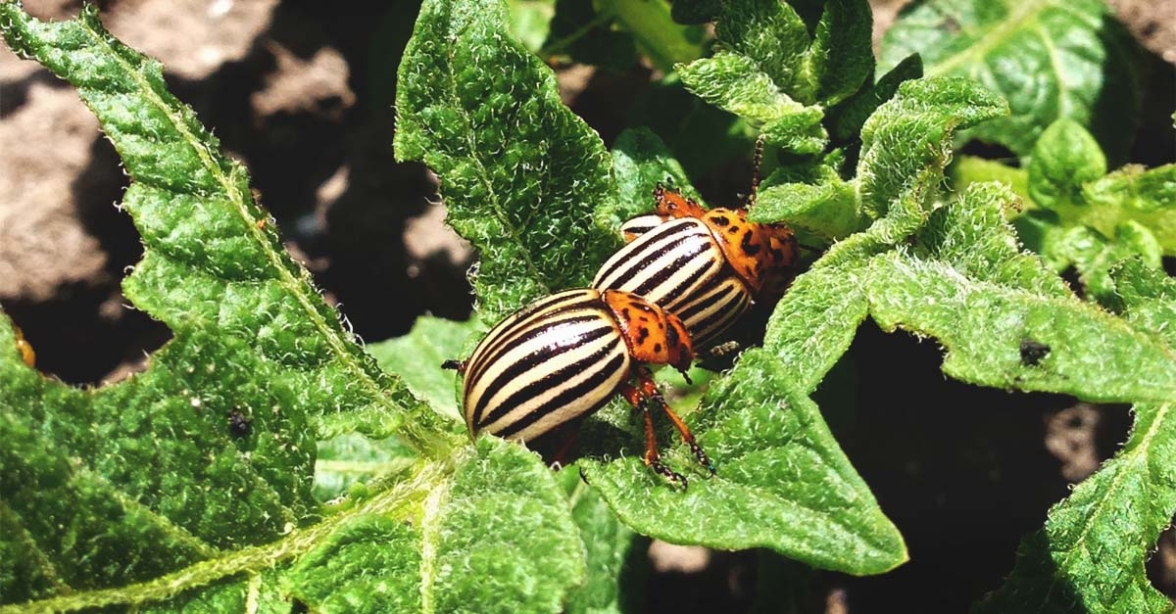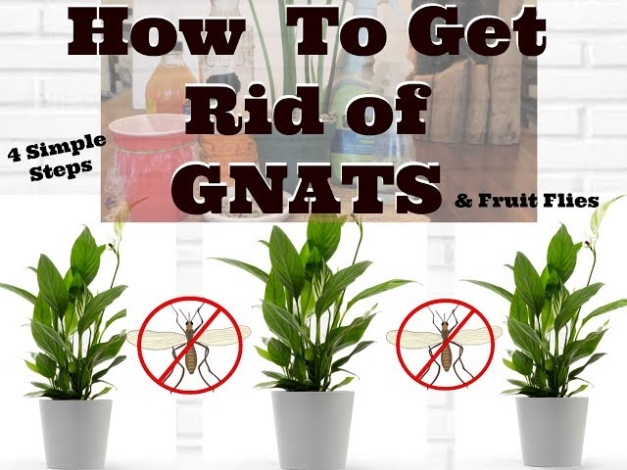Say Goodbye to Spider Mites!
Spider mites, those pesky little pests that can wreak havoc on your beloved Plants. If you’ve ever had the misfortune of dealing with these tiny troublemakers, you know just how frustrating and damaging they can be. But fear not, for we are here to provide you with the ultimate guide to banishing spider mites for good!

Image Source: plantura.garden
First and foremost, it’s important to understand what exactly spider mites are and why they pose a threat to your plants. Spider mites are tiny arachnids that belong to the Tetranychidae family. They are not insects, but rather more closely related to spiders. These minuscule creatures feed on the sap of plants, using their piercing mouthparts to suck out the fluids from the leaves, stems, and buds.
One of the most common signs of a spider mite infestation is the presence of tiny webs on the underside of leaves. These webs are used by the mites for protection and can often be mistaken for regular spider webs. Additionally, you may notice stippling or yellowing of the leaves, as well as a general decline in the health and vigor of your plants.
So, how can you effectively get rid of these unwelcome guests? There are several methods you can employ to combat spider mites and protect your plants. One of the most popular and effective ways to control spider mites is to introduce natural predators into your garden. Ladybugs, lacewings, and predatory mites are all voracious eaters of spider mites and can help keep their populations in check.
Another method of dealing with spider mites is to regularly spray your plants with a strong jet of water. This will help dislodge the mites from the plant and wash them away. You can also mix up a Homemade insecticidal soap using a few drops of dish soap and water and spray it onto the affected plants. Be sure to test a small area of the plant first to ensure that it won’t cause any damage.
Neem oil is another natural remedy that can be effective in controlling spider mites. Neem oil is a plant-based insecticide that works by suffocating the mites and disrupting their reproductive cycle. Simply dilute the neem oil with water according to the instructions on the bottle and spray it onto your plants.
If all else fails, you can resort to using chemical pesticides to eradicate spider mites. However, it’s important to use these products as a last resort and to follow the instructions Carefully to avoid harming beneficial insects and pollinators.
In addition to treating the infested plants, it’s also important to take steps to prevent future spider mite outbreaks. Keep your plants well-watered and fertilized, as healthy plants are better able to withstand pest attacks. Regularly inspect your plants for signs of infestation and take proactive measures to control any pests you find.
By following these tips and techniques, you can effectively say goodbye to spider mites and protect your plants from future infestations. Remember, a little vigilance and a proactive approach can go a long way in keeping your garden healthy and thriving. So roll up your sleeves, unleash your inner plant protector, and show those spider mites who’s boss!
Mastering the Art of Pest Control
Welcome to the ultimate guide on mastering the art of pest control! If you’re a Plant enthusiast, you know that dealing with pests like spider mites can be a real challenge. These tiny creatures can wreak havoc on your beloved plants, leaving them weak and vulnerable. But fear not, because with the right knowledge and tools, you can banish these pesky pests for good!
First things first, it’s important to understand the enemy. Spider mites are small insects that thrive in warm, dry conditions. They feed on the sap of plants, causing yellowing leaves, stunted growth, and even death if left untreated. These pests can quickly take over your garden if not kept in check, so it’s crucial to take action as soon as you spot them.
One of the most effective ways to control spider mites is through natural predators. Ladybugs, lacewings, and predatory mites are all beneficial insects that feed on spider mites, keeping their population in check. By introducing these natural predators into your garden, you can create a balance that will help prevent infestations.
In addition to natural predators, there are several other methods you can use to control spider mites. One popular option is neem oil, a natural insecticide that disrupts the mites’ life cycle and prevents them from reproducing. Simply mix a solution of neem oil and water and spray it on your plants to keep spider mites at bay.
Another effective method is using a strong blast of water to dislodge the mites from your plants. Simply spray your plants with a hose on a regular basis to knock off any pests and prevent them from establishing a colony. This method is particularly effective for outdoor plants that can withstand a strong stream of water.
If you prefer a more hands-on approach, you can also use a Homemade insecticidal soap to control spider mites. Mix together water, dish soap, and a small amount of vegetable oil to create a natural spray that will suffocate the mites on contact. Be sure to test the spray on a small area of your plant first to ensure it won’t cause damage.
In addition to these methods, it’s important to practice good garden hygiene to prevent spider mite infestations. Keep your plants well-watered and fertilized to promote strong, healthy growth that can withstand pest attacks. Remove any dead or damaged leaves promptly, as these can attract mites and other pests.
By mastering the art of pest control, you can ensure that your plants stay healthy and vibrant all year long. With a combination of natural predators, insecticides, and good gardening practices, you can banish spider mites from your garden for good. So roll up your sleeves, put on your gardening gloves, and get ready to show those pesky pests who’s boss!
Top Tips for a Bug-Free Garden
Welcome to your ultimate guide to banishing those pesky Plant pests for good! If you’re tired of battling spider mites and other bugs in your garden, you’ve come to the right place. In this article, we will explore some top tips for creating a bug-free garden that will keep your plants healthy and thriving all season long.
1. Choose the Right Plants
One of the most important steps in creating a bug-free garden is to choose the right plants. Some plants are more susceptible to pests than others, so do your research before you start planting. Look for plants that are known to be resistant to common garden pests, such as marigolds, lavender, and chrysanthemums. These plants not only add beauty to your garden but also act as natural repellents for many bugs.
2. Keep Your Garden Clean
Another key to preventing bug infestations in your garden is to keep it clean and tidy. Remove any dead or diseased plants, as they can attract pests. Weed regularly to prevent bugs from hiding and breeding in your garden. Also, make sure to clean up any fallen leaves or debris, as these can provide shelter for pests. By maintaining a clean garden, you can reduce the likelihood of a bug invasion.
3. Use Natural Pest Control Methods
Instead of reaching for harmful chemical pesticides, consider using natural pest control methods in your garden. There are many eco-friendly options available, such as introducing beneficial insects like ladybugs and lacewings, which are natural predators of many garden pests. You can also make your own pest-repelling sprays using ingredients like garlic, neem oil, and soap. These natural remedies are safe for your plants and the environment, and they can be just as effective as chemical pesticides.
4. Practice Crop Rotation
Rotating your crops each season is another effective way to prevent bug infestations in your garden. Planting the same crops in the same location year after year can lead to a buildup of pests and diseases in the soil. By rotating your crops, you can disrupt the life cycle of garden pests and reduce the risk of infestations. Consider grouping plants from the same family together and rotating them to different areas of your garden each season.
5. Encourage Biodiversity
Creating a diverse garden ecosystem is essential for maintaining a healthy balance and preventing bug infestations. Plant a variety of flowers, herbs, and vegetables to attract beneficial insects and pollinators to your garden. By encouraging biodiversity, you can create a natural barrier against pests and promote a thriving garden ecosystem. Consider adding plants like dill, fennel, and yarrow to attract beneficial insects like hoverflies and parasitic wasps.
6. Monitor Your Garden Regularly
Finally, be proactive in monitoring your garden for signs of pest infestations. Check your plants regularly for any signs of damage, such as holes in the leaves, sticky residue, or webbing. Look for common pests like aphids, caterpillars, and spider mites, and take action immediately if you spot any signs of trouble. By catching pest infestations early, you can prevent them from spreading and causing serious damage to your plants.
By following these top tips for a bug-free garden, you can create a healthy and thriving oasis that is resistant to common garden pests. With a little bit of effort and some eco-friendly practices, you can banish those pesky bugs for good and enjoy a beautiful and bountiful garden all season long. So put on your gardening gloves, roll up your sleeves, and get ready to unleash your inner plant protector!
Unleash Your Inner Plant Protector: How to Banish Spider Mites for Good!
As a plant parent, there’s nothing worse than discovering a pesky infestation of spider mites on your beloved greenery. These tiny arachnids may be small, but they can wreak havoc on your plants if left unchecked. But fear not, fellow plant enthusiasts, for I am here to guide you on a mission to banish those pesky pests for good!
First and foremost, it’s important to understand what exactly spider mites are and why they pose a threat to your plants. These minuscule creatures are related to spiders and feed on the sap of plants by piercing the plant tissue with their mouthparts. This feeding process can cause significant damage to your plants, leading to yellowing leaves, stunted growth, and in severe cases, plant death.
So, how can you unleash your inner plant protector and combat these troublesome pests? The key lies in early detection and proactive prevention strategies. Regularly inspecting your plants for signs of spider mite infestations, such as webbing on the leaves and stippling (small dots) on the foliage, can help you catch the problem before it spirals out of control.
Once you’ve identified a spider mite infestation, it’s time to spring into action. One of the most effective ways to eradicate these pests is by using natural predators, such as ladybugs and predatory mites, to feed on the spider mites and keep their population in check. Introducing these beneficial insects into your garden can help create a natural balance and reduce the need for chemical pesticides.
In addition to natural predators, there are several organic solutions that can help you combat spider mites. Neem oil, for example, is a popular choice for controlling spider mites as it disrupts their feeding and breeding cycles. Simply dilute the neem oil according to the instructions on the bottle and spray it onto the affected plants. Repeat this process every few days until the infestation is under control.
Another effective organic remedy for spider mites is a Homemade garlic spray. To make this DIY solution, simply blend a few cloves of garlic with water and a small amount of liquid soap. Strain the mixture and spray it onto the affected plants, focusing on the undersides of the leaves where spider mites tend to hide. The strong scent of garlic repels the pests and can help eliminate them from your plants.
In addition to natural predators and organic remedies, maintaining a healthy growing environment for your plants is essential for preventing spider mite infestations. Keeping your plants well-watered and properly fertilized can help them resist pest attacks and recover more quickly from damage. Additionally, regularly cleaning and pruning your plants can help remove any potential hiding spots for spider mites and other pests.
As you embark on your journey to banish spider mites for good, remember to stay vigilant and proactive in your pest control efforts. By unleashing your inner plant protector and incorporating natural predators, organic remedies, and good gardening practices into your routine, you can keep your plants healthy and thriving for years to come. So roll up your sleeves, grab your gardening gloves, and show those spider mites who’s boss!
how to get rid of plant spider mites










